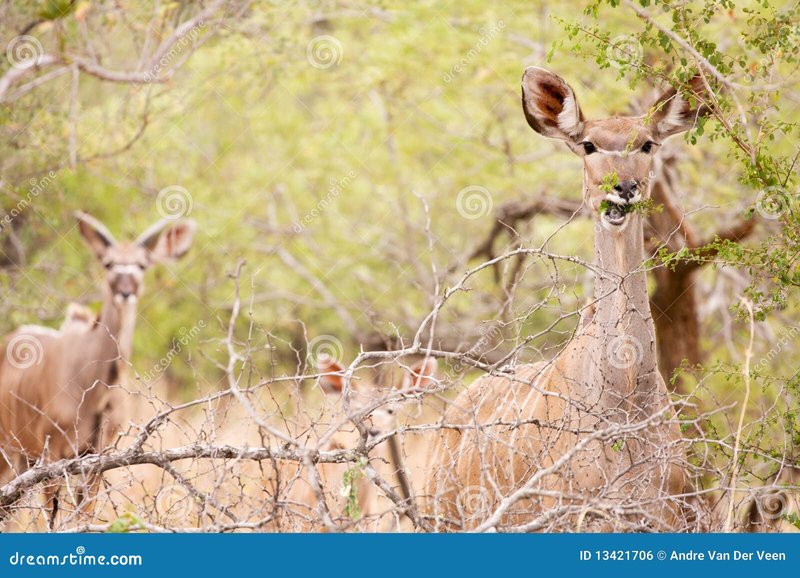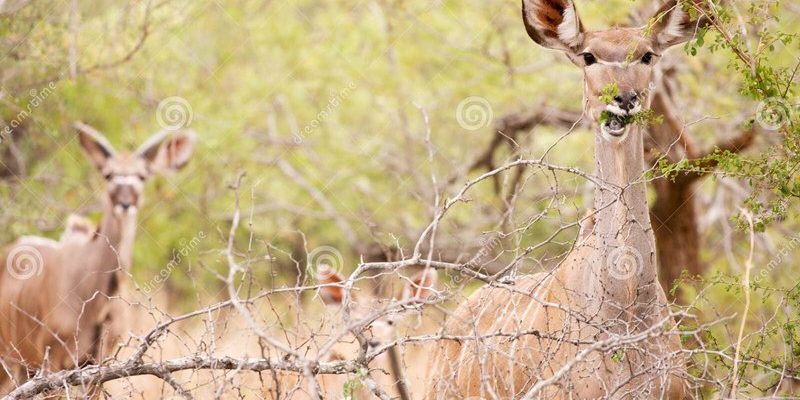
Kudus, especially the greater kudu, are well-known for their majestic spiral horns and long legs. But what truly captivates nature lovers is their nurturing process. You might think of it as a mix of careful planning and a touch of luck, much like how we navigate the ups and downs of life. So, how do kudus ensure the safety and growth of their young in a world filled with predators and challenges? Let’s dive into this fascinating subject and explore the strategies and behaviors that make kudus exceptional parents.
Understanding Kudu Parenting Behavior
Kudus have a variety of strategies when it comes to raising their young, often honed over thousands of years. The first step in the parenting journey starts with mating. Kudus are typically solitary animals, but during the mating season, males will establish territories and attract females through a series of vocalizations and displays. Once a female is ready to mate, she will seek out a male and, after a short gestation period of around seven months, she will give birth to a single calf.
After birth, the mother’s first instinct is to find a safe spot for her calf. A hidden place in dense vegetation is ideal, as it provides excellent cover from potential predators. You might be wondering how long the mother stays nearby. Well, she often leaves her young alone for several hours at a time to feed nearby. This can feel risky, but it’s part of her strategy. By keeping the calf hidden, she minimizes the risk of an encounter with predators like lions or hyenas.
The Importance of Hiding and Camouflage
One of the most crucial tactics in a kudu’s parenting toolkit is the use of *camouflage*. Young kudus are born with a beautiful coat of reddish-brown fur, adorned with white stripes and spots that help them blend in seamlessly with their surroundings. It’s almost as if their appearance is an evolutionary cheat code for survival! When a calf lies still in the tall grass, it becomes nearly invisible to prying eyes.
This natural camouflage is complemented by the mother’s behavior. After giving birth, she avoids areas with dense predator activity and continually monitors her surroundings. You may envision her as a watchful guardian, always on alert. When she senses danger, she will often divert attention away from her young by acting as if she’s being cautious, drawing predators away to give her calf a chance to escape.
Feeding and Nutrition for Young Kudus
Once the calves are old enough to venture out and explore, their diet becomes vital for their growth. Kudus are browsers, which means they primarily eat leaves, shoots, and fruits from trees and bushes. For young kudus, it’s essential to get the right nutrients, especially during their first few months. The mother will lead her calf to areas rich in young, tender foliage, ensuring the calf gets a healthy diet to support its rapid growth.
Interestingly, kudus can also be picky eaters. They often select specific plants based on their nutritional value. This behavior is useful for young calves, as it encourages them to follow their mothers and learn about their environment. As the calf matures, it will begin to mimic what it observes, picking up the skills necessary for survival.
Social Learning and Interaction
Social learning plays a crucial role in how young kudus develop. Once calves are old enough, they start interacting with other young animals. This interaction helps them understand social cues and behaviors that are vital for their survival. Young kudus might play and frolic in the grass, testing their strength and agility. These playful moments aren’t just for fun—they’re vital for developing the skills necessary for escaping predators later on.
You may think of these young animals as little apprentices in the art of survival. They learn from each other, imitating what they see, whether it’s how to graze or how to be alert to dangers. Observing the older, more experienced animals helps them gain confidence.
Dealing with Predators
Predators are an ever-present threat in the wild, so a kudu mother must remain vigilant. Common predators include lions, leopards, and wild dogs. When a mother senses danger, she often goes into overdrive, using her keen senses to assess the situation. She might freeze to avoid drawing attention or lead her calf to safety in thick cover.
If an encounter with a predator occurs, kudus have a remarkable ability to use their speed and agility to escape. They can leap up to 8 feet in the air, making quick, zig-zag movements that often leave predators confused. This incredible ability to move fast helps ensure both mother and calf can evade the dangers lurking in the shadows.
Mother-Young Bonding
The bond between a mother kudu and her calf is profound and essential for the young animal’s survival. Mother kudus often vocalize softly to their calves, providing comfort and reassurance. This vocal communication helps strengthen their connection. It’s a heartwarming sight, seeing a mother gently nuzzle her calf, reinforcing this strong bond that is critical during the early stages of life.
As the calf grows, the mother continues to protect and teach it. This relationship is not just about survival; it’s about nurturing and teaching, providing a sense of security in a bustling world. The calf relies on its mother for guidance, ensuring it understands how to navigate the complexities of its environment.
The Journey to Independence
As calves grow, they gradually gain independence. By six to eight months, they start to explore further from their mothers, learning how to fend for themselves while still returning for support. The transition can be bittersweet; it’s a blend of nurture and letting go.
Eventually, the young kudu will leave its mother’s side to join or establish its own herd. This shift is a natural progression, much like how we eventually carve our own paths in life. While the bond remains significant, the young kudu must now apply all the lessons learned to thrive in the wild.
In conclusion, the journey of how kudus raise their young is a remarkable blend of instinct, caution, and nurturing. From careful hiding to teaching essential survival skills, every aspect is crucial in ensuring that the next generation can flourish in the wild. Understanding these strategies gives us a deeper appreciation of these majestic animals and the challenges they face daily.

